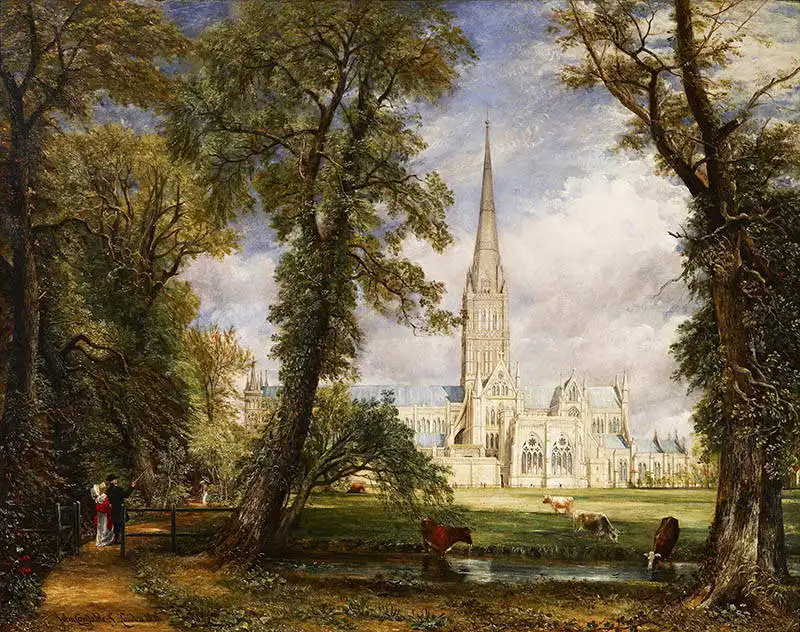Salisbury Cathedral
Date:
19th centuryMedium:
oil on canvasLocation:
Victoria & Albert Museum, London, UKSalisbury Cathedral was painted by English painter
John Constable in 1823. This painting is known as "Salisbury Cathedral from the Meadows" and is one of his most important works.
The painting depicts a wide view of a
landscape with a river and a bow, which is a characteristic motif of Constable. The arch provides a view of Salisbury Cathedral on the horizon. Salisbury Cathedral is the dominant feature of the picture. The tall tower and
architectural details of the cathedral are carefully captured. Constable was a master at capturing light and shadow. The image includes dramatic lighting effects and realistic shadows, which add atmosphere and depth. Constable was a naturalist and his paintings often depicted landscapes with great emphasis on precision and romance. Depictions of sky, water and greenery are typical of his work. The painting exudes the calm and power of nature, which was a subject that Constable appreciated. Although it is a
landscape painting, it also emphasizes the power and impressiveness of human architecture, here in the form of a cathedral.
Constable painted picture Salisbury Cathedral in 19th century. Prevailing color of this fine art print is green and its shape is landscape. This art piece is located in Victoria & Albert Museum, London, UK. This image is printed on demand - you can choose material, size and finishing.
John Constable (1776 - 1837). English painter during
Romanticism. He was the son of a miller in Suffolk County and since childhood, he dreamed of becoming one of the best landscape painters of the 19th century. At last, painting really became the sole purpose of his existence. In December 1817, he moved to London with his wife, and there the first of their seven children was born. Children then followed almost invariably each year, but it was very difficult and exhausting to feed such a large family. Landscape painting was not recognized nor a much profitable profession in England in the 19th century. John and Mary worked very hard, which later destroyed their health. Despite this, however, gradually the first significant successes arrived. In 1819, John Constable became an associate member of the Royal Academy of Arts.
Two years later, he painted his most famous work
Hay Wagon. He exhibited it in London, but he came to fame in 1824 when this image received the gold medal at the Salon in Paris. The local appraisal was full of recognition, but in England his work was viewed with reserve. A year later, although he was accepted as a full member of the Royal Academy of Arts, he exhibited a grim picture, Hadleigh Castle, which expressed grief over the death of his wife. He entrusted their seven children to a nurse, but he still cared for them very well and conscientiously. A very renowned piece is
Wivenhoe Park of 1816. In 1833, however, he fell ill and was greatly plagued by old age. To conserve his strength, he painted only less demanding watercolours. Finally, Constable died after a stroke in 1837. His paintings were sold for a small amount auction, and his work achieved recognition many years later.


